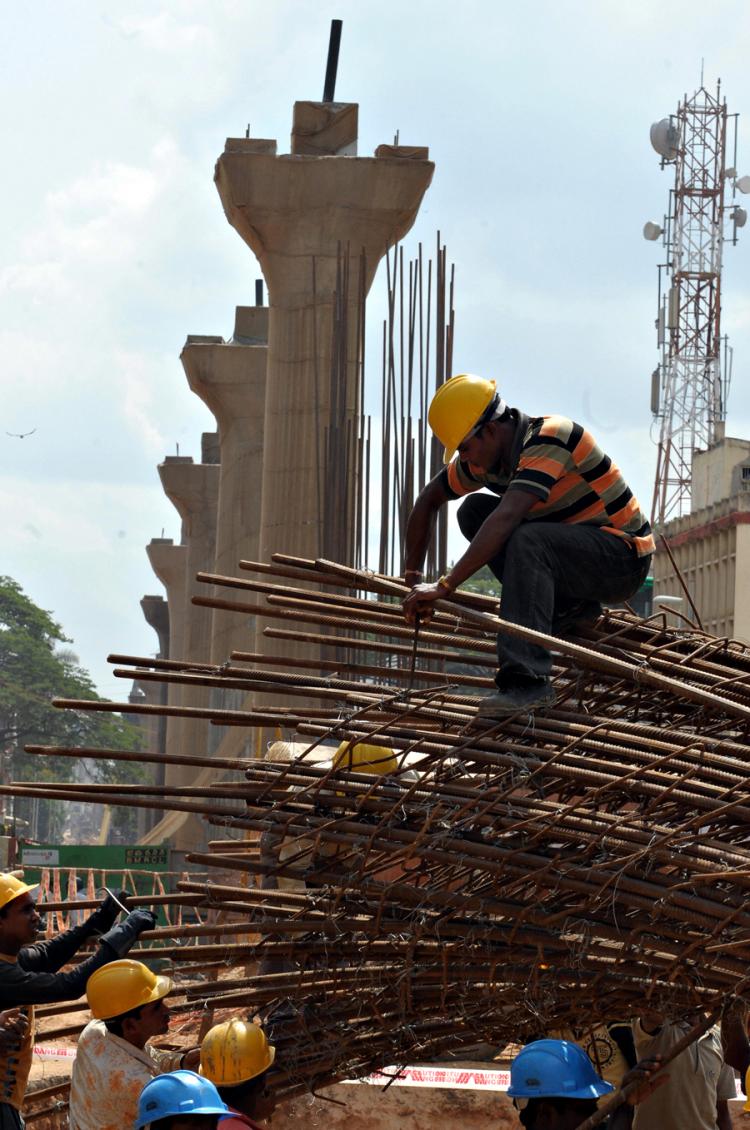 |
| Picture Credit: www.theepochtimes.com |
India’s recently released data reveals an increased annual compound employment rate of only 0.82% for the period from July 2009-June 2010, even though GPD has risen rapidly. As the author of this article writes, these numbers essentially point to “jobless growth in the Indian economic boom.” However, they also reveal labor market and employment patterns that are important for policy makers. Men’s work has declined, most likely due to a decline in small-scale activities given the growth of the corporate sector of the economy. Job creation has mostly been concentrated in casual, irregular work, which is fragile and leaves workers less protected. A positive reason for the reduced labor force is the increasing number of young people pursuing education. However, India needs to develop a plan to increase all forms of employment, even small-scale activities, or its increasingly educated youth will have difficulty when entering job markets over the next few years.
By Jayati Ghosh
Guardian July 14, 2011
Every five years, India's statistical system releases the results of a large scale sample survey that generates comprehensive data about consumer expenditure, employment conditions and much else. The results of the most recent survey conducted from July 2009 to June 2010 have just been released, and they have created shock waves in the establishment.
The survey found that employment generation actually decreased sharply between 2004-05 and 2009-10, especially when compared to the earlier five-year period. This is surprising given that this was a period of very rapid GDP expansion, and points to the growing possibility of jobless growth in the Indian economic boom. For everyone aged over 15, employment of all kinds (including self-employment, part-time work, home based work and so on) in terms of the principal activity increased at an annual compound rate of only 0.82%, compared to 2.7% in the previous period.
This led to an extraordinary reaction among some of India's top economic policy makers. Instead of examining the results in detail to see how policies must adjust to take account of this disturbing reality, they decided that the data generated by their own statistical authority (incidentally one of the most respected in the developing world) must be wrong. Some even castigated the statistical organisation for faulty collection and presentation of survey data.
This might be amusing, but such reactions are really a pity, because the data reveals much of significance about India's labour markets and employment patterns that policy makers need to know.
For example, for women, total employment actually fell, mostly because of a massive decline in self-employment. This may reflect the lack of recognition of women's work among the investigators, as has been claimed. But self-employment has also fallen for men, and so this could also be related to declining viability of small-scale activities, since much of the recent economic growth has been corporate driven. The slowdown in job growth was not only in agriculture, where it could be expected, but in non-agricultural activities, where the rate of employment growth has nearly halved from 4.7% annual rate to 2.5%.
Regular paid work (that is work done on a regular basis for an employer, whether in the formal or informal sector) has barely increased, and so the big increase has been in casual work, which tends to be based on daily contracts, and is therefore extremely fragile and unprotected. Organised employment is likely not to have increased much at all, despite the massive explosion of incomes in the organised sector (which have largely accrued to profits).
Some of the decline in labour force participation is actually good news: thus, among the 15 to 24 year age group, there has been a very significant rise in the number of those involved in education. The increase is really quite significant - around 50% over the five-year period for both men and women.
This is obviously to be welcomed: the citizens of India deserve to be better educated and the economy desperately needs a more skilled workforce. But it also points to a concern that should surely exercise our policy makers, if they can bring themselves to look at a dataset that they appear to be rejecting at present. According to this data, there are nearly 30 million more young people putting themselves through more education in the hope of being able to access better jobs. The number of young people in secondary and tertiary education is at least 55 million.
Soon, perhaps even within the next five years, these young people will enter the job market and expect to access employment that is at least minimally commensurate with the efforts they have put in to receive more education. But in the previous five-year period, all forms of employment (regular and casual paid work as well as self-employment) only increased by around 28 million. If this sluggish pace of job creation continues, there will be even larger gaps between aspiration and reality in India's labour markets.
That such a combination is a recipe for enhanced social tensions and political unrest is well known and has been reinforced by recent experience across the world. For that reason alone, surely the government should sit up to take notice of its own data?



